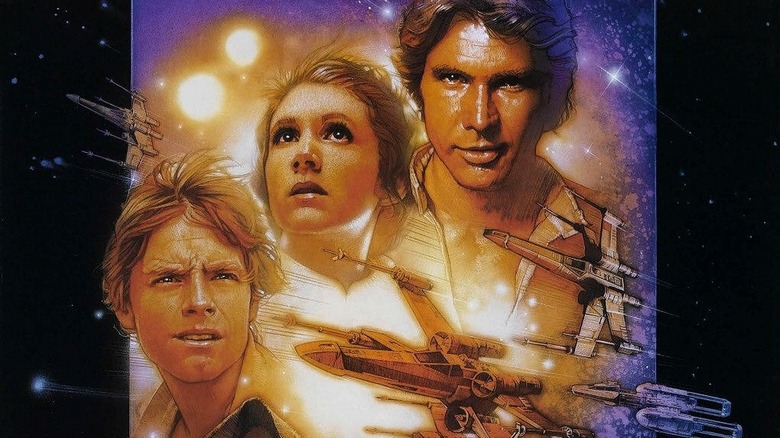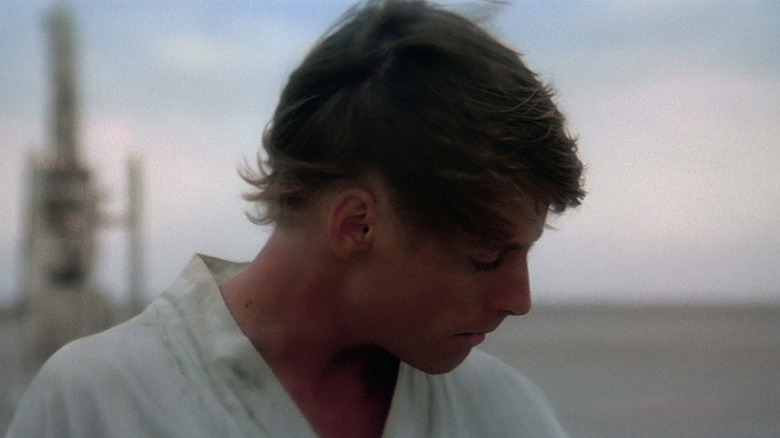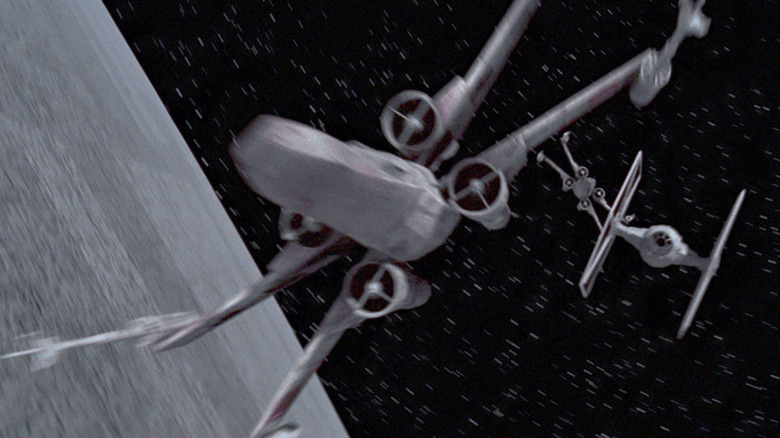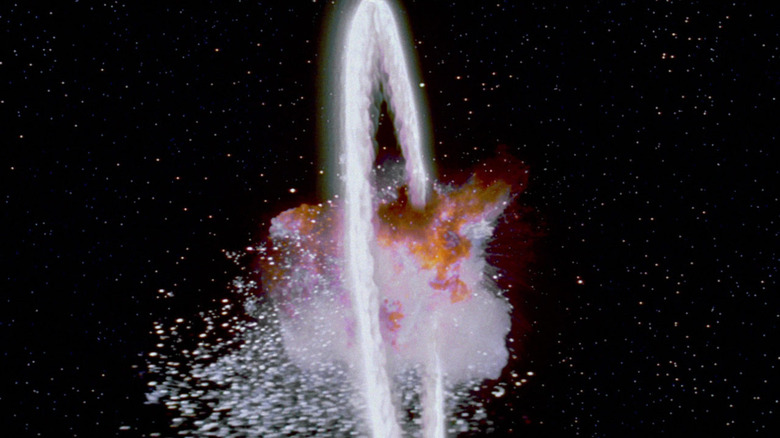
(Welcome to Tales from the Box Office, our column that examines box office miracles, disasters, and everything in between, as well as what we can learn from them.)
It may be unbelievably hard to imagine in the world we live in now but there was a time when "Star Wars" was not at the forefront of the pop culture conversation. There was roughly a decade following the release of "Return of the Jedi" where there simply was not all that much new stuff in a galaxy far, far away being released to drive the conversation in a meaningful way. Sure, we had toys, books, and other things of the like, but without a big-ticket item to capture the cultural consciousness, George Lucas' blockbuster franchise had somewhat taken a backseat for much of the '90s.
That, however, ended swiftly when, in 1997, Lucas and 20th Century Fox decided to give multiple generations of fans the chance to see the original "Star Wars" trilogy on the big screen, either again or first the first time, with the so-called "Special Editions." This would kick off in January of that year with the newly-restored and updated version of "A New Hope," which made more money than a 20-year-old movie had any right to -- but this is "Star Wars" we're talking about. In honor of the 25th anniversary of the "Special Editions," we're going to look back at how they came about, how they dominated the box office for three months, and the lessons modern Hollywood can stand to learn from their success.
The Movie: The Star Wars Special Editions

Near-countless film essays and documentaries have covered the production of the original "Star Wars" in great detail. But, to recap, Fox had little faith in Lucas' vision and the team was inventing special effects on the fly to try and make the whole thing work. Spoilers: it worked super well. But Lucas has always been a tinkerer and a forward-thinker. To that end, he had tampered with the films several times over the years, adding "A New Hope" to the title of the original movie down the line, for example.
Lucas, in particular, has always been a fan of technology being able to advance filmmaking. And he was looking to do so in a big way with tons of CGI in the planned prequel trilogy. As something of a test run, the filmmaker decided to, along with his team at Industrial Light & Magic, add some new scenes and sequences to "A New Hope," "The Empire Strikes Back," and "Return of the Jedi" to create new, definitive versions of the movies that would be re-released in theaters.
This was bold but, for Fox, it had money written all over it, so why not? This would give old fans the chance to revisit the past and new fans the chance to see these movies on something other than a worn-out VHS tape for the first time ever. It was hard to see, from a business perspective, any fault. The motive behind this was explained best by Lucas himself in an interview with the American Society of Cinematographers magazine.
"There will only be one [version of the films]," he said. "And it won't be what I would call the 'rough cut', it'll be the 'final cut'. The other one will be some sort of interesting artifact that people will look at and say, 'There was an earlier draft of this'. The same thing happens with plays and earlier drafts of books."
Yes, in Lucas' mind, this was going to be his chance to edit history and introduce his true vision for the stone-cold cinematic classics to the masses. He couldn't know the hubbub that would generate in the years to come but, speaking further, in the same interview, the director doubled-down on that notion.
"So what ends up being important in my mind is what the DVD version is going to look like, because that's what everybody is going to remember. The other versions will disappear. Even the 35 million tapes of Star Wars out there won't last more than 30 or 40 years. A hundred years from now, the only version of the movie that anyone will remember will be the DVD version [of the Special Edition], and you'll be able to project it on a 20-foot-by-40-foot screen with perfect quality. I think it's the director's prerogative, not the studio's, to go back and reinvent a movie."
Indeed, Lucas did reinvent his movies but, the important thing is, these were largely the same movies and, for the masses, that's all that mattered. The promise of breathing new life into the iconic franchise proved to be more than enough to turn this retooling into arguably one of the most successful gambits in Hollywood history.
The Financial Journey

January tends to be a boring month at the box office, but not in 1997 thanks to the re-release of "Star Wars: A New Hope" on January 31. Astonishingly, a 20-year-old film topped the charts with a whopping $35 million opening weekend. It is well worth remembering that the original movie had a budget said to be in the $11 million range and had already made more than $320 million domestically in its original run. So, even though money was spent to change the film and market the re-release, this was mostly icing on the cake. All told, Episode IV's "Special Edition" took in $138.2 million domestic, and that doesn't even account for inflation.
That paved the way for "The Empire Strikes Back" to take in $67.5 million in February, with "Return of the Jedi" rounding things out in March with a $45 million haul. All told, the trilogy of re-releases earned $472 million worldwide. Yes, even without accounting for inflation, a trio of years-old movies made an amount of money that any Hollywood studio would be thrilled with for a big budget blockbuster with a massive budget. It simply cannot be overstated how miraculous that was, and how much of an outlier it is.
Certain re-releases over the years have done well, such as "Jurassic Park" or last year's "Avatar" re-release in China, But what Lucas and Fox were able to do in this case cemented this franchise as something wholly unique in the landscape of pop culture, with a fandom so devoted and so passionate that it is downright unparalleled. Case in point? A "Star Wars" movie was atop the box office for six out of seven weekends from February through March in '97. The only thing that even comes close is the Marvel Cinematic Universe, and that's an entirely different animal unto itself.
The Lessons Contained Within

One could fill several books going over the changes that Lucas made to the original "Star Wars" trilogy and the conversations that opens up about creative works and whether or not the audience has any ownership over those works. I myself am the proud owner of a tank top that says "Han Shot First" on it. Trust me, I have many thoughts on this and would love to live in a world where I could get 4K Ultra HD Blu-ray copies of the unaltered, original trilogy. But that is Ryan in his 30s talking, and this piece is not about opening up that large can of worms.
If you were to talk to 9-year-old Ryan, you would find a boy downright ecstatic about the notion of finally getting to see his favorite movies in a theater with his mother, who got to relive a hugely important part of her childhood over the course of several months with her son, who she converted into a hardcore "Star Wars" fan pretty much at birth. Millions of others around the world had similar experiences. At the time, divorced from the larger conversation that would develop about the "Special Editions" later, the further conversation that would come following the prequels, this was one heck of a pop culture moment.
This was well before streaming, and really even before DVDs would become the standard. High-definition was far from being a commodity in the home and being able to see "Star Wars" in all of its glory like this truly felt special. In that way, the "Special Editions" moniker is accurate. The biggest takeaway, from my point of view, in the modern context is that when things are so accessible and seemingly disposable is that it couldn't hurt to try and make movies feel special from time to time.
Netflix has a habit of dumping movies and moving onto the next thing. People binge watch and also move onto the next thing. It's the nature of the beast as it exists. My hope, in reflecting on this collective pop culture moment from 1997 is that streaming services and studios can find a way to make things feel special again, not disposable. Not just because it makes things feel nice and fun, but because there is a lot of money to be made when that magic can be captured. There is value in that, both of the dollars and cents variety and the priceless feeling-based sort. Let us not forget that as the streaming era rages on unabated.
Read this next: Star Wars Movie Villains Ranked Least To Most Powerful
The post Tales From the Box Office: The Star Wars Special Editions Turned Generational Nostalgia Into Gold appeared first on /Film.
0 Comments